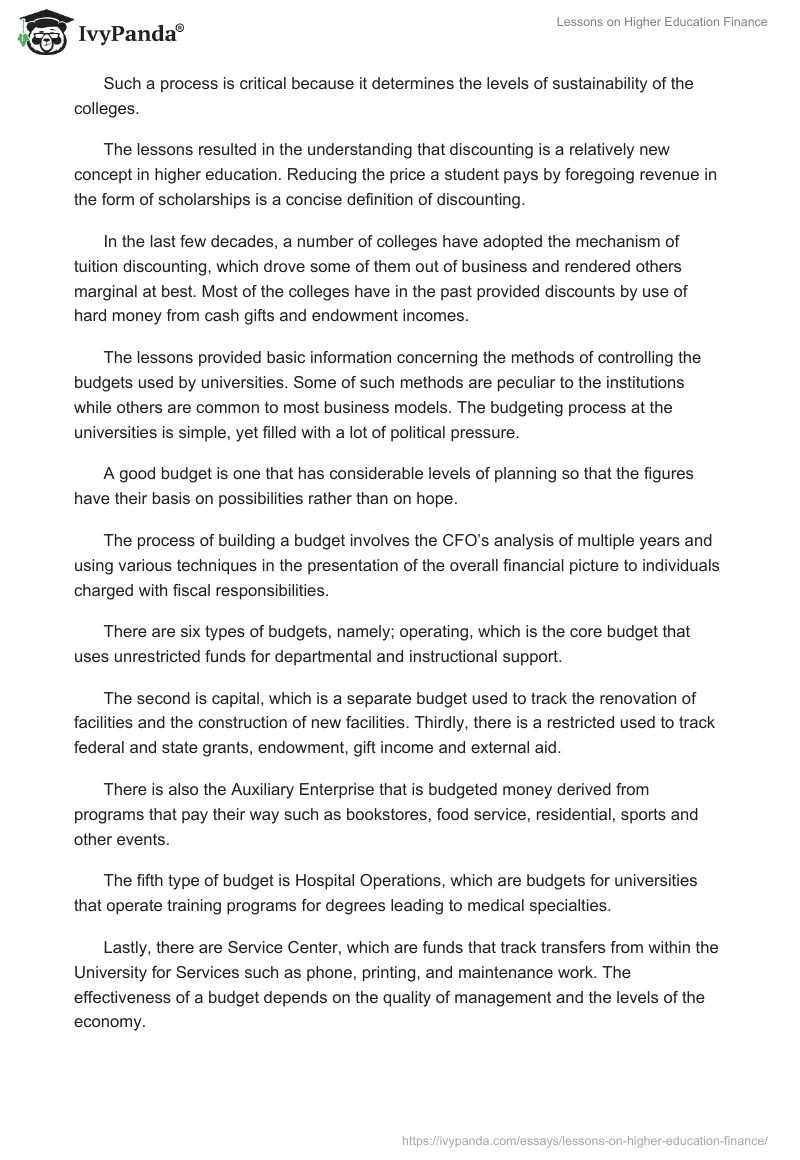The experience led to the finding that the costs of college education have risen rapidly over the last five decades, and that the rate of increase has surpassed the levels of household income. Colleges are spending more time and money as they are held more accountable for these increases in cost.
Therefore, the numbers of students who can afford college education have significantly reduced. The fact that higher education will always struggle to find enough funding for all the programs explains the need for the governmental interventions in the processes higher education funding.
Consequently, the levels of government expenditure on funding higher education have also risen.
The contemporary university aid programs give students more money than they need for tuition such that some of them get money to spend. Low-income students who have a limited ability to borrowing cannot get enough grant to facilitate learning from colleges of their choice.
However, the case is different with those who can borrow money because they have the ability to study at the schools that they desire. Another challenge is that the public has grown more demanding in the recent past than the old days in terms of accountability of the funds spent on aid.
Another useful revelation is the fact that the increases in the value of loans advanced to students has caused an increase in the number of college students across the entire nation. The lessons also revealed three fundamental concerns related to the management of endowments.
In this respect, the first one is the rate of spending at the rate of re-investment. The second is the investment policy of the colleges. The last element is that of fundraising, which gives the universities a chance of raising extra money for the operations and offset the spent money.
Such a process is critical because it determines the levels of sustainability of the colleges.
The lessons resulted in the understanding that discounting is a relatively new concept in higher education. Reducing the price a student pays by foregoing revenue in the form of scholarships is a concise definition of discounting.
In the last few decades, a number of colleges have adopted the mechanism of tuition discounting, which drove some of them out of business and rendered others marginal at best. Most of the colleges have in the past provided discounts by use of hard money from cash gifts and endowment incomes.
The lessons provided basic information concerning the methods of controlling the budgets used by universities. Some of such methods are peculiar to the institutions while others are common to most business models. The budgeting process at the universities is simple, yet filled with a lot of political pressure.
A good budget is one that has considerable levels of planning so that the figures have their basis on possibilities rather than on hope.
The process of building a budget involves the CFO’s analysis of multiple years and using various techniques in the presentation of the overall financial picture to individuals charged with fiscal responsibilities.
There are six types of budgets, namely; operating, which is the core budget that uses unrestricted funds for departmental and instructional support.
The second is capital, which is a separate budget used to track the renovation of facilities and the construction of new facilities. Thirdly, there is a restricted used to track federal and state grants, endowment, gift income and external aid.
There is also the Auxiliary Enterprise that is budgeted money derived from programs that pay their way such as bookstores, food service, residential, sports and other events.
The fifth type of budget is Hospital Operations, which are budgets for universities that operate training programs for degrees leading to medical specialties.
Lastly, there are Service Center, which are funds that track transfers from within the University for Services such as phone, printing, and maintenance work. The effectiveness of a budget depends on the quality of management and the levels of the economy.
Budgeting is a projection of the plans that institutions have towards meeting their financial obligations in the future. The planning process helps universities in the avoidance of deficits and meeting the uncertainties with adequate levels of preparation.
Therefore, one of the approaches is that, which puts one appointed person in charge of the budget. What they prefer will always enter the critical decision-making processes, which is an element of planning. The outcome evaluation of the decisions reduces the risks of uncertainties.
There was also a chance for exploring the reason for the growing sizes of varsity budgets. The ever-growing size of the university populations is the cause of the increase in the higher education costs.
The pressure also increases the need for accountability from the outside of the colleges. Another implication of the increases in the population sizes is the fact that the size of staff also expands and lays pressure on overhead costs. The large size of the schools also increases the administrative costs of the institutions.
The large sizes of the colleges also call for increments in the number of campuses, which is also a contributor to the costs of running the schools.


